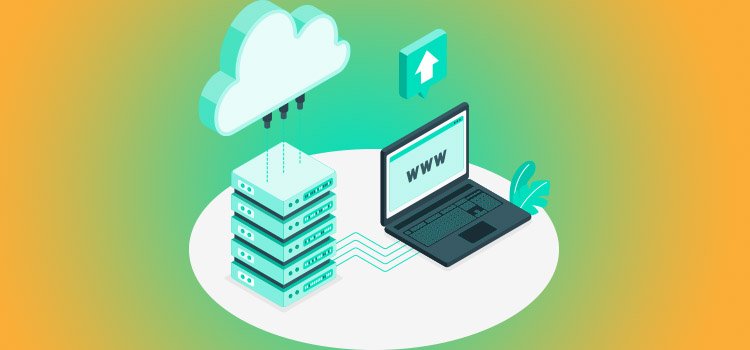
|
Getting your Trinity Audio player ready...
|
In this article, we'll explore Content Delivery Networks, known as CDNs, and understand how you can configure them on your website for better performance, speed, and reliability.
If you are looking to improve users' experience on your website, this article is for you. Let's dive into this universe and discover how CDNs can revolutionize the way your content is delivered on the web.
What are CDNs
CDN, or Content Delivery Network, is a network of geographically distributed servers that store copies of a website's static content, such as images, videos, and script files.
These servers are strategically positioned in different parts of the world to ensure fast and efficient delivery of content to users regardless of their geographic location.
How do CDNs work?
When a user accesses a website that uses a CDN, the content request is not directed directly to the website's origin server, i.e., its accommodation. Instead, the CDN automatically identifies the server closest to the user and delivers content from that server. This reduces latency and page load time, providing a faster, more satisfying experience for the end user.
When a user requests content from a site that uses a CDN, the following happens:
- The user's browser sends a request to the website's domain name server (DNS).
- DNS returns the IP address of the CDN server closest to the user.
- The user's browser sends the content request to the CDN server.
- The CDN server checks whether the requested content is cached.
- If the content is cached, the CDN server delivers it to the user's browser.
The CDN server delivers the content to the user's browser.
Benefits of CDNs
There are many benefits to using a CDN, including:
- Improved page load time: By delivering content to users from closer servers, CDNs can significantly reduce page load times. Consequently, it can improve user experience and increase conversion.
- Increased website availability: CDNs can help ensure that your website is always available, even if the origin server is unavailable. This is because CDNs replicate content across multiple servers, so content can still be delivered to users if one server becomes unavailable.
- Reduced bandwidth costs: By delivering content to users from closer servers, CDNs can help reduce website bandwidth costs. After all, users will download less data from the origin server.
- Improved website security: CDNs can help protect your website from DDoS attacks and other security threats. This is because CDNs can distribute website traffic across multiple servers, which can make it difficult to overload a single server.
- Better user experience: All the benefits mentioned above contribute to a better user experience. That is, users who visit a website that uses a CDN will likely experience faster page load times, greater website availability, and an overall more secure and reliable experience.
How to set up a CDN on your website
Choose a CDN Provider
There are many CDN providers available, each with their own features and pricing. Therefore, when choosing a CDN provider, it is important to consider the following factors:
- Network coverage: The CDN must have a wide network of servers around the world to ensure content is delivered to users quickly and efficiently.
- Features: Additionally, it should offer the features you need, such as content compression, content caching, and DDoS attack protection.
- Price: The price of CDN services can vary greatly, so it is important to compare prices from different providers before making a decision.
Some of the most popular CDN providers include:
Create an account with the CDN provider
After choosing a CDN provider, you will need to create an account with the provider. This usually involves providing some basic information about your website, such as your website URL and the type of content you want to cache.
Add your domain to the CDN
After creating an account with the CDN provider, you will need to add your domain to the CDN. This usually involves changing your domain's DNS settings to point to the CDN's servers.
Configure CDN settings
Most CDN providers allow you to configure a variety of settings, such as which types of content should be cached, how long the content should be cached, and which caching rules should be applied.
Test your website with CDN
After setting up your CDN, it's important to test your website to ensure it's working properly. This way, you can do analysis using a CDN testing tool such as WebPageTest Or the GTmetrix.
Optimizing CDN Usage
Static and dynamic content caching
One of the main advantages of CDNs is their ability to cache static content such as images and CSS files, thereby reducing the load on origin servers. Additionally, some CDNs also support dynamic content caching, which can further improve website performance.
File compression
Compressing files, such as images and scripts, before uploading them to the CDN can help reduce page load times even further. Many CDN providers support compression techniques such as gzip, which can be easily configured to optimize your site's performance.
Using cache headers
Configuring appropriate cache headers is essential to ensure that content is cached correctly by browsers and intermediary servers. As a result, this can help reduce network traffic and improve overall website performance.
Important considerations when using a CDN
The impact on SEO
It is important to use a CDN in a way that does not harm the SEO of your website. This means you need to ensure that search engines can access and index your cached content. Most CDN providers offer features to help ensure your SEO doesn't suffer.
The cost of the service
The cost of CDN services can vary greatly, so it's important to choose a provider that fits your budget. Likewise, you should also consider the value that the CDN will provide to your website before making a decision.
The need for integration with other services
If you use other services, such as a web application firewall (WAF) or content management system (CMS) like WordPress, for example, will need to ensure they are CDN compatible. So, some CDN providers offer integrations with popular services, while others require you to manually configure the integration.
Additional observations
It's important to keep your CDN software up to date to ensure you're taking advantage of the latest features and security.
You can monitor your CDN's performance to identify and resolve any issues. Use a CDN analytics tool to gain insights into how your CDN is impacting your website.
Performance monitoring and analysis
CDN Monitoring Tools
Most CDN providers offer performance monitoring and analysis tools to help users track traffic, latency, and other important metrics. These tools are, above all, essential for identifying possible problems and optimizing CDN performance.
Important metrics to track
Some of the most important metrics to track include page load time, data transfer rate, and number of content requests served by the CDN. Monitoring these metrics regularly can help you identify performance bottlenecks and take corrective action quickly.
Final considerations
As the demand for online content continues to grow, CDNs have become an essential tool for ensuring fast and reliable delivery of content across the web. Therefore, by setting up a CDN on your website, you can significantly improve the performance, speed, and reliability of your website, providing a superior user experience.
So don't wait any longer, start exploring the possibilities of CDNs today and take your website to the next level!
Image: Freepik

Marcel Castilho is a specialist in digital marketing, neuromarketing, neuroscience, mindfulness and positive psychology. In addition to being an advertiser, he also has a Master's degree in Neurolinguistic Programming. He is the founder and owner of Vero Comunicação and also the digital agency Vero Contents.



